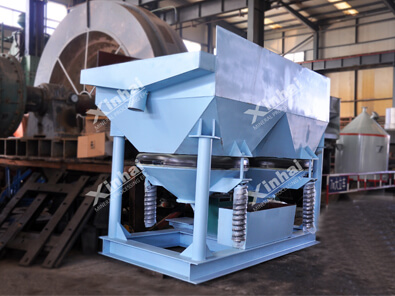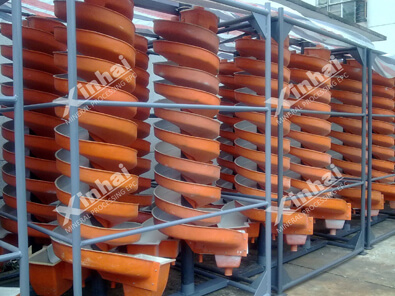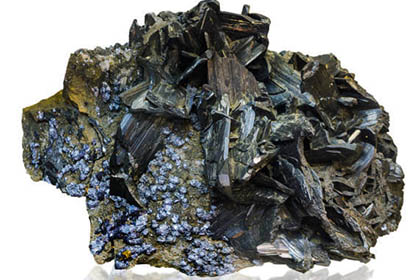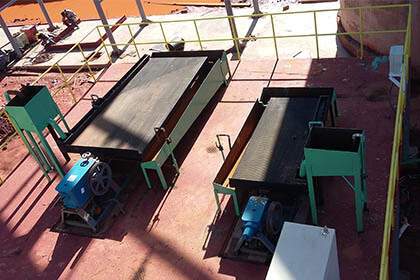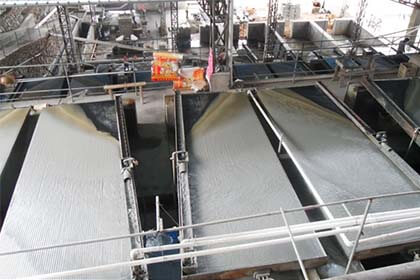A Comprehensive Guide to Mining Gravity Separation
 Essow
Essow
 Nov 21, 2023
Nov 21, 2023
 2800
2800
If you want to know more details about equipment, solutions, etc, please click the button below for free consultation, or leave your requirements!
Mining is a complex industry that relies on various techniques to extract valuable minerals from ores. Gravity separation is a widely used method in the mining sector, offering an efficient and cost-effective solution for mineral recovery. In this comprehensive guide, we will delve into the intricacies of mining gravity separation, exploring its principles, equipment, applications, and benefits. Whether you are a mining professional or an enthusiast, this article will provide valuable insights into maximizing mineral recovery through gravity separation.
01 Understanding Gravity Separation
BackGravity separation is a physical separation process based on the differences in specific gravity between minerals. It utilizes the force of gravity to separate particles based on their density and size. The principle behind gravity separation is that heavier particles settle more quickly under gravity while lighter particles are carried away, allowing for the concentration of valuable minerals.
Specific gravity plays a crucial role in gravity separation. The specific gravity of a mineral is determined by its chemical composition and physical properties. Heavier minerals have higher specific gravity values, while lighter minerals have lower values. When a mixture of minerals is placed in a fluid medium, such as water, the denser particles settle faster and sink to the bottom, while the lighter particles float or are carried away.
02 Equipment Used in Gravity Separation
BackEffective gravity separation relies on well-designed and properly operated equipment. Mining operations employ a range of equipment tailored to specific gravity separation techniques. This article will discuss the features, advantages, and considerations of equipment such as jigs, shaking tables, spirals, centrifugal concentrators, and dense media separators. Understanding the equipment's capabilities and limitations is crucial for optimizing mineral recovery.
1. Jigging Machines
Jigging machines, also known as jigs, are versatile gravity separation devices that employ pulsating water and a bed of particles to separate minerals based on their density. They utilize the principle of stratification, where heavier particles sink to the bottom while lighter particles are carried upward. Jigging machines are widely used for the recovery of heavy minerals, such as gold, tin, tungsten, and diamonds.

(Jig)
2. Shaking Tables
Shaking tables, also referred to as concentrator tables, are gravity separation machines that consist of a table deck with riffles and a water flow system. The shaking motion creates a differential movement based on the specific gravity of minerals, allowing heavier particles to settle along the riffles while lighter particles are washed away. Shaking tables are commonly used for the concentration of fine-grained ores, including gold, tantalum, and chromite.

(Shaking Table)
3. Spiral Concentrators
Spiral concentrators utilize the principle of gravity and centrifugal force to separate minerals based on their specific gravity and shape. These machines consist of a helical trough, which spirals downward, creating a flowing film of particles. Heavier minerals move towards the center and collect in the inner region of the spiral, while lighter particles are carried outward. Spiral concentrators are effective for the concentration of heavy minerals, such as iron ore, rutile, and zircon.

(Spiral Chute)
4. Centrifugal Separators
Centrifugal separators, including centrifugal concentrators and cyclones, are gravity separation machines that exploit the centrifugal force generated by spinning motion. They separate particles based on their size, shape, and density. Centrifugal concentrators, such as the Knelson concentrator and Falcon concentrator, are commonly used for the recovery of fine gold and other precious metals. Cyclones, on the other hand, are utilized for the classification and separation of particles based on size.
5. Dense Media Separators
Dense media separators (DMS) employ a suspension of dense media, such as ferrosilicon or magnetite, to achieve gravity separation. These machines create a fluidized bed with varying densities, allowing minerals with different specific gravities to be separated efficiently. DMS is extensively used for the separation of coal, diamond, and base metal ores.
03 Factors Influencing Gravity Separation
BackSeveral factors influence the efficiency and effectiveness of gravity separation in mining operations. Particle size, density, shape, liberation, and specific gravity of minerals play a vital role in separation outcomes. Additionally, factors such as water flow rate, slope, feed rate, and pulp density impact the separation process.
1. Specific Gravity of Minerals
The specific gravity of minerals is a fundamental parameter that determines their relative settling rates during gravity separation. Minerals with higher specific gravity will settle faster and have a greater tendency to concentrate in the heavy product, while minerals with lower specific gravity will float or be carried away in the light product. Therefore, the specific gravity of the minerals being separated is a critical factor in achieving effective gravity separation.
2. Particle Size Distribution
Particle size distribution plays a significant role in gravity separation. Coarser particles tend to settle more rapidly than finer particles due to their greater mass. It is generally easier to achieve efficient separation with a narrow particle size range. Fine particles may require specialized equipment or techniques to improve separation efficiency. Additionally, the liberation of valuable minerals from the gangue material is essential for effective gravity separation.
3. Particle Shape and Density
Particle shape and density influence the settling behavior of minerals. Irregularly shaped particles may experience variations in drag forces, affecting their settling rates. Dense minerals with high density will settle faster than less dense minerals. Understanding the shape and density characteristics of the minerals being separated is important for optimizing gravity separation processes.
4. Fluid Medium Properties
The properties of the fluid medium used in gravity separation, such as water, air, or other liquids, can affect the separation efficiency. The viscosity, density, and surface tension of the fluid medium influence the drag forces acting on the particles and their settling rates. The choice of fluid medium and its properties should be optimized for the specific minerals and separation requirements.
5. Flow Rate and Pulp Density
The flow rate of the fluid medium and the pulp density (solid-liquid ratio) are critical factors in gravity separation. The flow rate affects the transport and stratification of particles. A proper flow rate is required to ensure optimal separation and prevent excessive turbulence or particle entrainment. The pulp density affects the hindered settling of particles and the sharpness of separation. Adjusting the flow rate and pulp density according to the specific characteristics of the minerals being separated is vital for achieving efficient gravity separation.
6. Equipment Design and Operation
The design and operation of gravity separation equipment, such as jigs, shaking tables, spirals, centrifugal concentrators, and dense media separators, also influence the separation efficiency. Factors such as the deck slope, water flow rate, stroke frequency, and amplitude affect the separation performance. The selection and optimization of equipment parameters should be based on the specific mineral characteristics and project requirements.
7. Process Variables
Various process variables, including feed rate, feed size, and feed distribution, can impact gravity separation. The feed rate determines the amount of material processed per unit time and affects the residence time of particles in the separation equipment. The feed size and distribution influence the liberation of valuable minerals and the efficiency of separation. Controlling and optimizing these process variables are essential for achieving effective gravity separation.
04 Advantages and Limitations of Gravity Separation
BackGravity separation offers several advantages in mining operations. It is a low-cost method, requires minimal energy input, and has a relatively simple operation. Furthermore, gravity separation can achieve high recovery rates and is environmentally friendly. However, it also has limitations, including its dependence on particle size and specific gravity differences. Understanding these advantages and limitations is crucial for effective implementation.
05 Optimization and Process Control
BackTo maximize the efficiency of gravity separation, optimization and process control strategies are essential.
1. Optimization
Optimization refers to the systematic approach of maximizing or minimizing a specific objective within a given set of constraints. In the context of gravity separation, optimization aims to maximize the recovery of valuable minerals while minimizing losses and optimizing process efficiency. Optimization involves:
Process Modeling: Developing mathematical models or simulations that represent the behavior and performance of the gravity separation process. These models consider various input variables and predict the output variables of interest, such as recovery, grade, and specific energy consumption.
Design of Experiments (DOE): Conducting controlled experiments to explore the effects of different process variables and their interactions on the performance of gravity separation. DOE helps identify the critical factors and optimal settings that lead to improved process efficiency and desired outcomes.
Parameter Estimation: Estimating the values of unknown parameters in process models using statistical techniques and experimental data. This helps refine the accuracy of the models and enables better optimization of the process.
Optimization Algorithms: Utilizing mathematical optimization algorithms, such as linear programming, non-linear programming, genetic algorithms, or machine learning algorithms, to determine the optimal values of process variables that maximize the objective function (e.g., mineral recovery) while satisfying the constraints.
Sensitivity Analysis: Assessing the sensitivity of the process to changes in different variables and identifying the most influential factors. This analysis helps prioritize efforts for optimization and process improvement.
2. Process Control
Process control involves the implementation of strategies and techniques to maintain, regulate, and adjust process variables in real-time to achieve the desired process performance. In gravity separation, process control aims to stabilize and optimize the separation process by continuously monitoring key parameters and making appropriate adjustments. Process control involves:
Instrumentation and Sensors: Installing sensors and instruments to measure critical process variables, such as flow rates, densities, particle sizes, and product grades. These measurements provide real-time data for process monitoring and control.
Control Strategies: Implementing control strategies, such as feedback control, feedforward control, or model predictive control, to regulate and manipulate process variables. These strategies use the measured data to compare it with setpoints or desired values and make necessary adjustments to maintain optimal operation.
Automation Systems: Utilizing advanced automation systems, such as distributed control systems (DCS) or programmable logic controllers (PLC), to facilitate real-time monitoring, data acquisition, and control of gravity separation processes. These systems enable efficient and timely control actions.
Alarm Systems: Implementing alarm systems to promptly alert operators about abnormal process conditions or deviations from optimal operation. Alarms help identify potential issues and allow operators to take corrective actions in a timely manner.
Data Analysis and Visualization: Employing data analysis and visualization tools to analyze historical process data, identify trends, and gain insights into process performance. This information assists in identifying areas for improvement and optimizing process control strategies.
3. Continuous Improvement
Optimization and process control are iterative processes that require continuous monitoring, analysis, and adjustment. By implementing a cycle of data collection, analysis, optimization, and control, the gravity separation process can be continuously improved over time. Ongoing monitoring and adjustment ensure that the process remains optimized and adaptable to variations in feed characteristics, equipment performance, and operating conditions.
06Conclusion
BackMining gravity separation is a valuable technique in the quest for efficient mineral recovery. Understanding the principles, equipment, applications, and optimization strategies can significantly improve the outcomes of mining operations. This comprehensive guide has provided insights into various aspects of gravity separation, equipping mining professionals and enthusiasts with the knowledge needed to enhance mineral recovery and drive success in the mining industry.
We also have many articles about gravity separation, please click the links to check them.
The Complete Guide of Jig for Mineral Processing
The Complete Guide of Shaking Table for Mineral Processing
Comprehensive Guide to Gravity Separator Maintenance
 +86 18716000713
+86 18716000713 xlyin@xinhaimining.net
xlyin@xinhaimining.net




 Message
Message Chat Now
Chat Now


